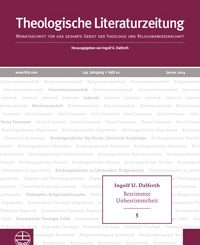A Persian Parable on Humility
In recent years, we have published many blogs on this website about parables in ancient Judaism and Christianity. This year we want to broaden our view in three ways: to parables from other periods in Judaism and Christianity, to parables in other cultures and religions, and to parables in literature and philosophy. In order to open up these new perspectives, we have asked a number of experts to write a guest blog about parables in their field of expertise. The 21st blog in this series has been written by prof. dr. Asghar Seyed-Gohrab. Prof. Seyed-Gohrab was born in Tehran (Iran), studied English and Persian language and culture in the Netherlands, and obtained his PhD degree on a study on Persian literature and Islamic mysticism at Leiden University. He has recently (2020) been appointed to the new chair of Iranian and Persian Studies at Utrecht University.
A salient characteristic of Persian literature is the use of anecdotes as parables to pass moralistic lessons to readers. Imparting moral lessons wrapped in attractive tales and succinct epigrams and terse expressions is a quality for which a medieval poet could receive economic rewards and public distinction. An essential feature of pre-Islamic Persian literature is didacticism, giving advice to educate or even to instill “civilized behaviour” on people. The genre is indicated by the term frahang, the forerunner of the modern Persian farhang or “culture.” Persian literary tradition is rich in collections of pithy precepts and instructions, many of which have a gnomic character and often contain parables.[1] These parables are written both for men in worldly positions such as kings, princes, and courtiers to teach them an ideal behaviour as a stateman, but parables are also deployed for religious purposes, instructing how to prepare oneself for the Hereafter. As such parables appear in almost all didactic genres.
A parable by Saʿdī of Shiraz

Sa’di in a Rose garden, from a manuscript (c. 1645) of the Gulistan (Rose garden) by Sa’di. Sa’di is on the right.
In this blog I concentrate on one parable by Saʿdī of Shiraz (c. 1210-1292), who used a constellation of parables in his masterpieces, the Gulistān (“The Rose Garden”) and the Būstān (“The Orchard”). Saʿdī was a favourite poet of the Enlightenment in Europe and his Gulistān was translated several times in various European languages. Several European authors including Voltaire, Diderot, Ernest Renan, and later Johann Gottfried Herder and Johann Wolfgang von Goethe. One of Saʿdī’s parables attracted the attention of Joseph Addison (1672-1719), writer and politician. In his article on associating with Fortunate people, he also elaborates about qualities such as arrogance and conceit and then he concludes with “a little Persian Fable” which he adapted as follows in the magazine Spectator (No. 293, Tuesday, February 5, 1712). “A Drop of Water fell out of a Cloud into the Sea, and finding itself lost in such an Immensity of fluid Matter, broke out into the following Reflection: ‘Alas! What an insignificant Creature am I in this prodigious Ocean of Waters; my Existence is of no Concern to the Universe, I am reduced to a Kind of Nothing, and am less than the least of the Works of God.’ It so happened, that an Oyster, which lay in the Neighbourhood of this Drop, chanced to gape and swallow it up in the midst of this its humble Soliloquy. The Drop, says the Fable, lay a great while hardning in the Shell, ‘till by Degrees it was ripen’d into a Pearl, which falling into the Hands of a Diver, after a long Series of Adventures, is at present that famous Pearl which is fixed on the Top of the Persian Diadem.”[2] Addison was among several other English authors who were interested in the Persian poet. Sir William Jones (1746-1794) was a key figure who translated a large amount of Persian poetry, Saʿdī’s parable is a good example. Jones was attracted to this parable and turn it into English and later into Latin[3]
This parable comes from the Būstān’s chapter four “On Humility” and reads as follows:[4]
| A drop of rain fell from a cloud:
It was abashed at seeing the ocean’s extent. “Who am I where the ocean is? If it exists, truly I do not exist.” When it looked at itself with a humility eye An oyster-shell fostered it dearly at her side. Heaven brought the drop’s value to such a place That it became the famous kingly pearl. He finds elevation who first becomes lowly Pounding on the door of non-existence to exist. |
یکی قطره باران ز ابری چکید
خجل شد چو پهنای دریا بدید که جایی که دریاست من کیستم؟ گر او هست حقا که من نیستم چو خود را به چشم حقارت بدید صدف در کنارش بجان پرورید سپهرش به جایی رسانید کار که شد نامور لؤلؤ شاهوار بلندی از آن یافت کو پست شد در نیستی کوفت تا هست شد |
Saʿdī’s Būstān is a moralistic poem, which according to its English translator, inculcates “a code of behaviour that is a paradoxical combination of the realistic and pragmatic with the mystical and high-minded… .”[5] It may indeed be a “paradoxical combination” but the stories and moral lessons have an internal logic for Persian readers as it is not strange to read a mystical and high-minded layer in such texts. As Dick Davis observes, when an English reader takes a book of verse, s/he “… does not expect to encounter mysticism or religious dogma” but the Persian reader does.[6] In fact, the Persian reader admires how the poet connects the worldly with the metaphysical, erotic with spiritual, and mundane with high-mindedness. Saʿdī opens his chapter by referring how God created man from earth and Satan with fire. By introducing Earth and Fire as opposite pairs of the Four Elements (the others being, Wind and Water), the poet associates negative qualities to Satan and praiseworthy traits to mankind. Being made of fire, Satan is arrogant, disobedient, restless, greedy, burning, and even quarreling with God when He asks Satan to prostrate before man at the dawn of the creation. Satan feels superior because he is made of fire while man is made of a clod of earth. Satan accepts God’s curse and removal from heaven to defend his opinion, swearing to God to astray man from the right path at every moment. By admonishing his reader to behave with modesty, Saʿdī is reminding his reader how Satan may tempt man to act arrogantly. The parable of the raindrop shows the insignificance of man in the creation and especially, how realization of one’s position in the vast creation may transform man to a lofty position. While Saʿdī imparts practical lessons of modesty and self-effacement, he is also alluding to a favourite mystical motif of the creation of a pearl.
From raindrop to pearl
It is believed that drops of April rain may fall in an oyster and grow to a pearl. The raindrop is a metaphor for a mystic who travels the world in search of the truth, and finally returns to the original home. The raindrop journeys in the form of damp to the air, becoming cloud, travelling the world, and finally returning to the ocean. In this parable, the raindrop is of water but it is different from all the waters as it is taken, nourished and matured by an oyster to become a pearl. While the raindrop stands for the mystic who travels alone, the process of transformation to a pearl points at exertion on the path and the long retreat to concentrate on God, the ocean symbolizes God’s unity. Schimmel refers to Goethe who alludes to this parable in his West-Östlicher Divan in following words, opening a novel perspective by interpreting raindrops belonging to God and their ripening in the modest oyster into peerless pearls:
Regentropfen Allahs,
Gereift in bescheidener Muschel-[7]

Prof. dr. Asghar Seyed-Gohrab (photographer Sacha de Boer)
While Saʿdī connects the raindrop’s realization of its insignificance with modesty as a parable in both practical and mystical senses, other Persian poets and mystics endlessly have contrived most ingenious and subtle variations on this image. The use of such parables shows the poet’s strategy to instruct a code of ideal behaviour to the reader in a vivid and striking way. Teaching the virtue of ‘humility’ with wise words would not be as effective as using a parable, which is easier to remember. Parables are sometimes connected in Persian literature to a phrase which receives a proverbial status. Contrary to Saʿdī’s parable, the aphorism in some parables has become more popular than the story. One such example is the maxim “This too shall pass” (īn nīz bugdharad), indicating that all states of human existence are ephemeral, whether it is joy or sorrow, poverty or wealth, victory or defeat, etc. The phrase forms a link in a chain of anecdotes told by various Persian poets.[8]
Bibliography
- Addison, J., Spectator, No. 293, Tuesday, February 5, 1712, (available at https://www.gutenberg.org/files/12030/12030-h/12030-h/SV2/Spectator2.html#section293, last accessed 17.08.2021)
- Bruijn, J.T.P. de, in Encyclopædia Iranica, s.v. Epigram.
- Davis, D., “On Not Translating Hafez,” in New England Review, 25 (1/2), 2004, pp. 310-18 available at http://www.columbia.edu/itc/mealac/pritchett/00ghalib/texts/txt_davis_translatinghafiz_2004.pdf
- Javadi, H., Persian Literary Influence on English Literature, Calcutta: Iran Society, 1983.
- Lewis, F., in Encyclopaedia Iranica, s.v. Golestān-e Saʿdi.
- Losensky, P., in Encyclopædia Iranica, s.v. Saʿdi.
- Saʿdī, Muṣliḥ al-Dīn, Būstān, ed. Gh. Yūsufi, Tehran: Khārazmī, 1375/1996.
- Schimmel, A., A Two-Colored Brocade: The Imagery of Persian Poetry, Chapel Hill: The University of North Carolina Press, 1992.
- Schimmel, A., Mystical Dimensions of Islam, Chapel Hill: The University of North Carolina Press, 1975.
- Shaked, S., Z. Safa, in Encyclopædia Iranica, s.v. Andarz (available online at http://www.iranicaonline.org/articles/andarz-precept-instruction-advice).
- Wickens, G.W., in Encyclopædia Iranica, s.v. Būstān.
- Wickens, G.M., Morals Pointed and Tales Adorned, The Bustān of Saʿdi, Leiden: Brill, 1974.
- Yohannan, J.D., “The Persian Poetry Fad in England, 1770-1825,” in Comparative Literature, 1952, Vol. 4, No. 2, pp. 137-160.
- Yohannan, J.D., Persian Poetry in England and America, Delmar, N.Y.: Caravan Books, 1977.
- Yohannan, J.D., The Poet Saʿdi, Bibliotheca Persica Persian Studies Series 11, Lanham, MD: University Press of America, 1987.
Websites
https://learned.substack.com/p/this-too-shall-pass (last accessed 20.08.2021)
Footnotes
[1] See S. Shaked, Z. Safa, Encyclopædia Iranica, s.v. Andarz (available online at http://www.iranicaonline.org/articles/andarz-precept-instruction-advice).
[2] https://www.gutenberg.org/files/12030/12030-h/12030-h/SV2/Spectator2.html#section293 (last accessed 17.08.2021)
[3] See J.D. Yohannan, “The Persian Poetry Fad in England, 1770-1825,” in Comparative Literature, 1952, Vol. 4, No. 2, p. 143. For a translation of this poem see H. Javadi, Persian Literary Influence on English Literature, Calcutta: Iran Society, 1983, p. 37:
As fables say, a drop of rain
Fell from a cloud into the main,
“Amid these waves how small am I!
I here for ever lost shall die:”
It said: and oyster, opening wide
Her mouth, imbi’d it with the tide.
Condensing there for many a year,
It grew into a pearly sphere.
Then by a skilful diver caught.
To Persia’s king the pearl was brought;
And now, exalted to a gem,
This drop adorns this diadem;
Thus by its fall an envy’d height
It gain’d, and rose from darkness into light.
[4] Saʿdī, Būstān, ed. Gh. Yūsufi, Tehran: Khārazmī, 1375/1996, p. 115; For a poetic translation see G.M. Wickens, Morals Pointed and Tales Adorned, The Bustān of Saʿdi, Leiden: Brill, 1974, p. 122.
[5] G. Michael Wickens, in Encyclopædia Iranica, s.v. Būstān.
[6] D. Davis, “On Not Translating Hafez,” in New England Review, 25 (1/2), 2004, pp. 310-18 available at http://www.columbia.edu/itc/mealac/pritchett/00ghalib/texts/txt_davis_translatinghafiz_2004.pdf
[7] As cited by A. Schimmel, A Two-Colored Brocade: The Imagery of Persian Poetry, Chapel Hill: The University of North Carolina Press, 1992, p. 204.
[8] An example of this story is to be found at https://learned.substack.com/p/this-too-shall-pass (last accessed 20.08.2021).







Recente reacties